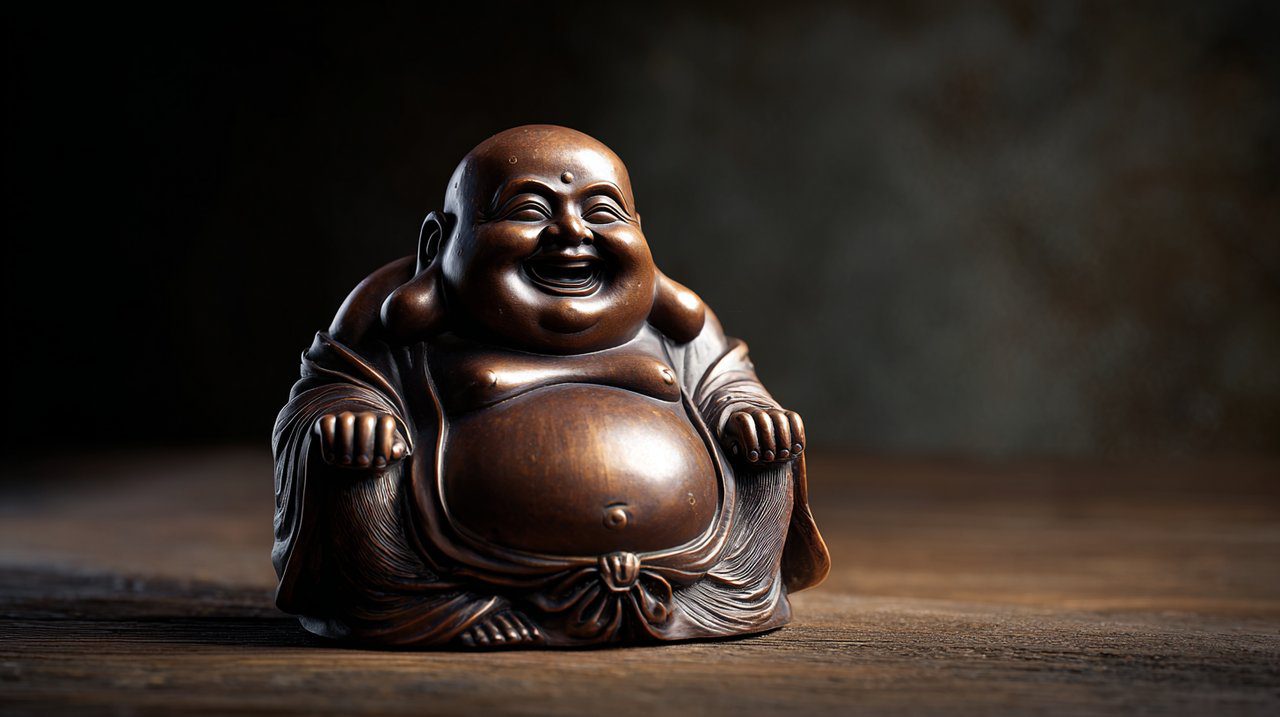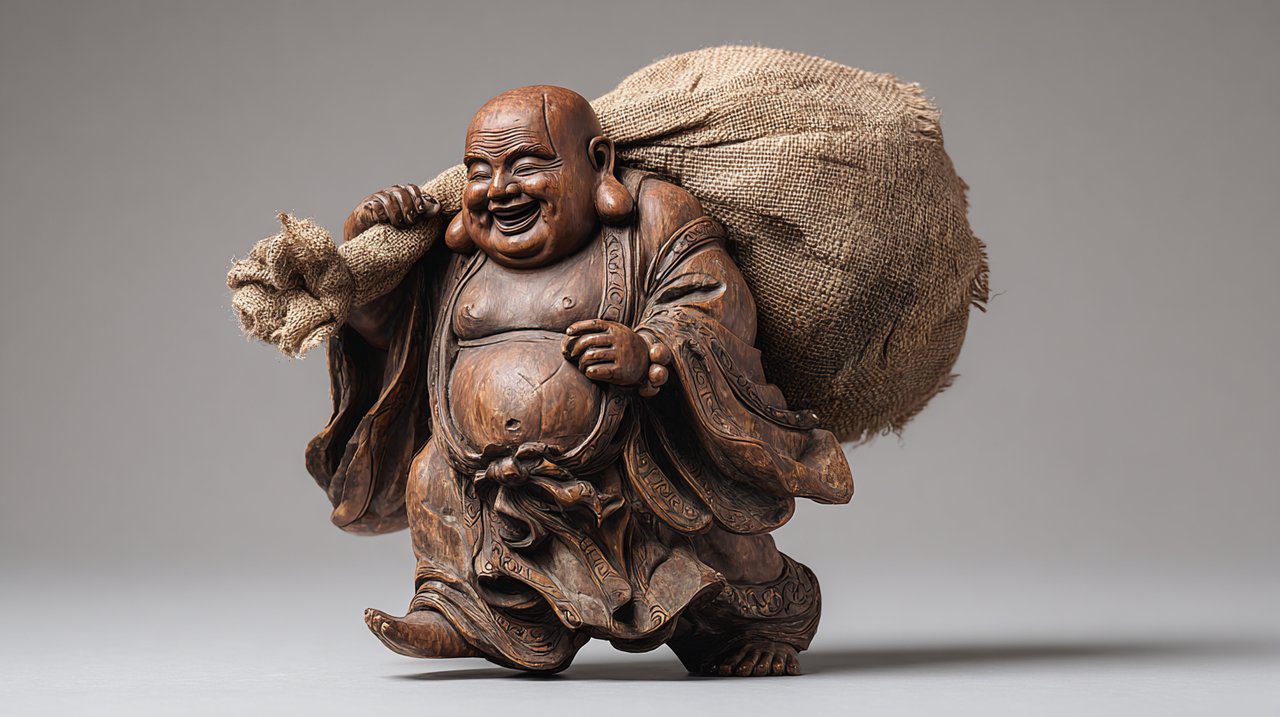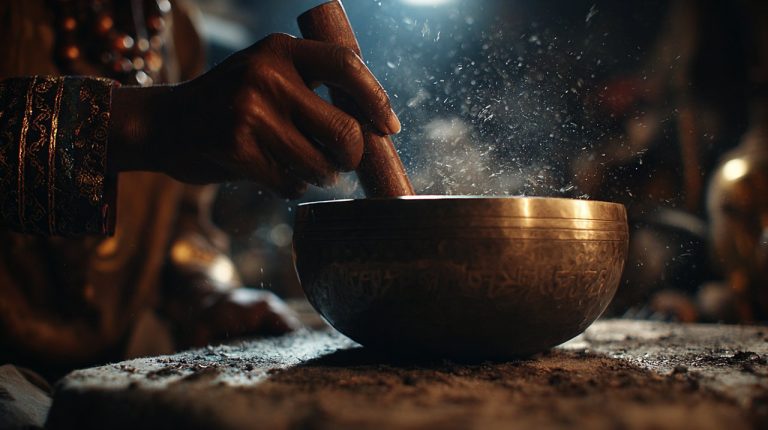The Happy Buddha: Meaning, Symbolism, and History
In the quiet solitude of a mountain valley, a lone pine stands, its branches reaching skyward yet deeply rooted in the earth, accepting its place. So too does the image of the Happy Buddha resonate within our shared human experience, a figure whose gentle radiance transcends all borders and beliefs. How is it that such a simple, joyful form continues to offer solace and inspiration, much like the steady, unending flow of a mountain stream?
The Happy Buddha’s Gentle Radiance
This iconic figure, often recognized by his prominent belly and wide, beaming smile, symbolizes far more than mere joviality. His presence in homes and temples across the globe speaks to a universal human yearning for peace and happiness. Like the wind that touches every leaf, the Buddha’s message of contentment is accessible to every soul, regardless of their individual journey.

Joy and Generosity: The Happy Buddha’s Core
The essence of the Happy Buddha lies in its profound symbolic language. It offers a silent teaching on how we might navigate the currents of existence with a quiet grace.
Embodying Contentment and Acceptance
At the very heart of the Happy Buddha’s being is unconditional joy. This is not a fleeting happiness, but a deep-seated contentment that blossoms from the acceptance of all things, much like a great oak stands firm and serene through all the seasons of its life. His robust form suggests an inner strength and resilience, capable of embracing life’s fullness without clinging or aversion.
Symbols of Abundance and Good Fortune
The Happy Buddha is often depicted with specific attributes, each carrying layers of deep meaning:
- The Big Belly: This symbolizes wealth, prosperity, and a fullness of spirit. It is also a gentle metaphor for our capacity to absorb troubles and worries, transforming them into a quiet joy.
- The Sack: This carries treasures, provisions, or even gifts for children. It signifies generosity and the simple act of sharing one’s blessings with others.
- Prayer Beads or Mala: These represent meditation and spiritual devotion, a constant reminder of the path towards inner peace.
- Children: Sometimes, he is depicted with children joyfully clambering over him. This symbolizes fertility, good progeny, and the pure joy found within family.

The Way of Water: A Taoist Reflection on Joy
From a Taoist perspective, the Happy Buddha’s wisdom beautifully mirrors the qualities of water. Water flows effortlessly, adapting to any container, finding its path around obstacles without resistance. It always seeks the lowest places, yet it nurtures all life it touches.
This reflects the Happy Buddha’s spirit of wu wei – effortless action – and ziran – natural spontaneity. His joy is not forced, but a natural outflow of being in harmony with the cosmos, letting go of control, and embracing things exactly as they are. Like a tranquil lake reflecting the sky, his inner peace is a mirror of outer acceptance.
A Journey Through Time: The Monk Budai
Origins of the Laughing Monk
The Happy Buddha is widely believed to be based on Budai (or Hotei in Japanese), an eccentric Chan (Zen) Buddhist monk who lived in China during the 10th century. He was known for his wandering lifestyle, his large belly, his constant smile, and his habit of carrying a cloth sack and a staff. Budai was revered for his benevolent nature and his uncanny ability to predict the future. He was even considered an incarnation of Maitreya, the future Buddha, which further cemented his spiritual significance.
Cultural Paths and Interpretations
As Budai’s image spread across lands, it gently evolved. In China, he blossomed into a popular folk deity associated with good fortune and prosperity. In Japan, as Hotei, he found his place among the Seven Lucky Gods. Across Southeast Asia and the Western world, the Happy Buddha’s image has been embraced as a universal symbol of happiness, abundance, and spiritual well-being.
Despite these regional variations, the core message of joy and contentment remains unchanged, much like the moon’s light. Though seen differently from various places on Earth, it is always the same moon, casting the same gentle glow.
Quiet Wisdom for Modern Paths
The Happy Buddha stands as a silent, ever-present guide, a gentle reminder that true prosperity is not merely material wealth, but a richness of spirit born from deep acceptance and generosity. His enduring smile invites us to pause, to breathe, and to find the simple, profound joy that resides within the present moment, just as a bird finds sustenance in the simplest seed.
His message, like the whisper of the wind through ancient trees, encourages us to shed our burdens, to embrace life’s natural ebb and flow, and to share our inner light with the world. To cultivate this inner calm, we might seek out objects that serve as gentle reminders of this timeless wisdom, or perhaps explore further the philosophies that inspire such serene living. This journey, much like a quiet walk through nature, reveals its deepest truths when we simply allow ourselves to observe and be.
💡 Frequently Asked Questions
The Happy Buddha's prominent belly symbolizes wealth, prosperity, and a fullness of spirit. It also represents the capacity to absorb troubles and worries, transforming them into quiet joy.
The sack the Happy Buddha carries signifies generosity and the act of sharing one's blessings. It is often depicted holding treasures, provisions, or gifts for children.
From a Taoist perspective, the Happy Buddha's wisdom mirrors water's effortless flow and adaptability, reflecting 'wu wei' (effortless action) and 'ziran' (natural spontaneity). His joy is seen as a natural outflow of harmony, not forced.
The Happy Buddha is widely believed to be based on Budai (or Hotei in Japanese), an eccentric Chan (Zen) Buddhist monk from 10th-century China known for his wandering, large belly, smile, and sack.
Across different cultures, the Happy Buddha has evolved. In China, he is a folk deity of good fortune. In Japan, as Hotei, he is one of the Seven Lucky Gods. In the West, he is embraced as a universal symbol of abundance and spiritual well-being.







